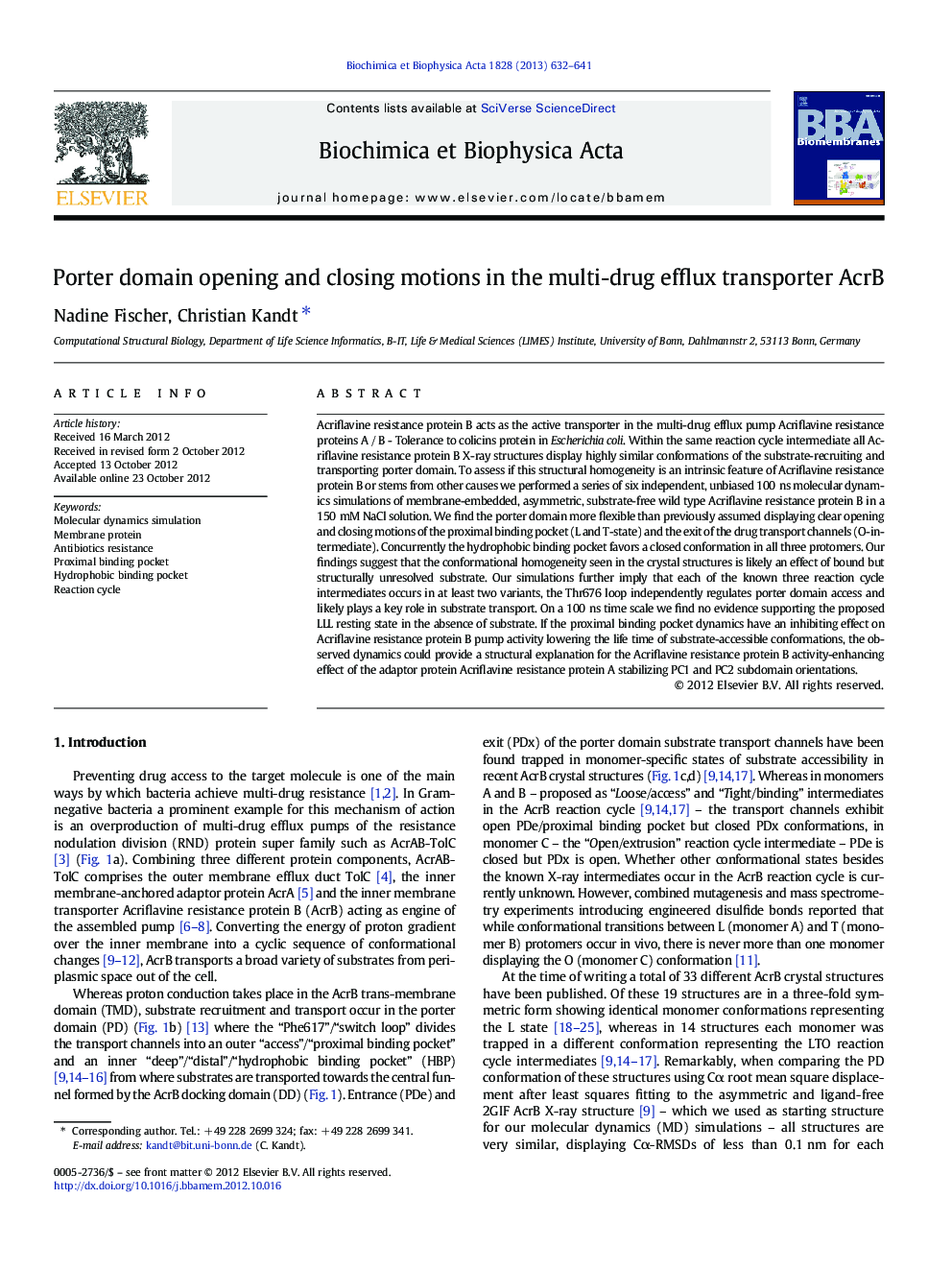| Article ID | Journal | Published Year | Pages | File Type |
|---|---|---|---|---|
| 1944401 | Biochimica et Biophysica Acta (BBA) - Biomembranes | 2013 | 10 Pages |
Acriflavine resistance protein B acts as the active transporter in the multi-drug efflux pump Acriflavine resistance proteins A / B - Tolerance to colicins protein in Escherichia coli. Within the same reaction cycle intermediate all Acriflavine resistance protein B X-ray structures display highly similar conformations of the substrate-recruiting and transporting porter domain. To assess if this structural homogeneity is an intrinsic feature of Acriflavine resistance protein B or stems from other causes we performed a series of six independent, unbiased 100 ns molecular dynamics simulations of membrane-embedded, asymmetric, substrate-free wild type Acriflavine resistance protein B in a 150 mM NaCl solution. We find the porter domain more flexible than previously assumed displaying clear opening and closing motions of the proximal binding pocket (L and T-state) and the exit of the drug transport channels (O-intermediate). Concurrently the hydrophobic binding pocket favors a closed conformation in all three protomers. Our findings suggest that the conformational homogeneity seen in the crystal structures is likely an effect of bound but structurally unresolved substrate. Our simulations further imply that each of the known three reaction cycle intermediates occurs in at least two variants, the Thr676 loop independently regulates porter domain access and likely plays a key role in substrate transport. On a 100 ns time scale we find no evidence supporting the proposed LLL resting state in the absence of substrate. If the proximal binding pocket dynamics have an inhibiting effect on Acriflavine resistance protein B pump activity lowering the life time of substrate-accessible conformations, the observed dynamics could provide a structural explanation for the Acriflavine resistance protein B activity-enhancing effect of the adaptor protein Acriflavine resistance protein A stabilizing PC1 and PC2 subdomain orientations.
Graphical abstractFigure optionsDownload full-size imageDownload high-quality image (97 K)Download as PowerPoint slideHighlights► Proximal binding pocket opens and closes in L and T but remains closed in O. ► Hydrophobic binding pocket predominantly closed in all protomers. ► Porter domain exit opens and closes in O but remains closed in L and T. ► Thr676 loop independently regulates substrate accessibility and is likely involved in transport. ► AcrB X-ray structures are likely stabilized by bound but unresolved substrate.
